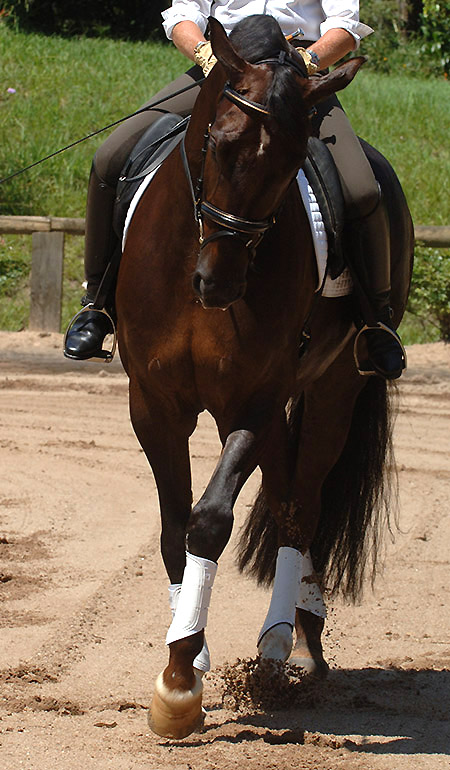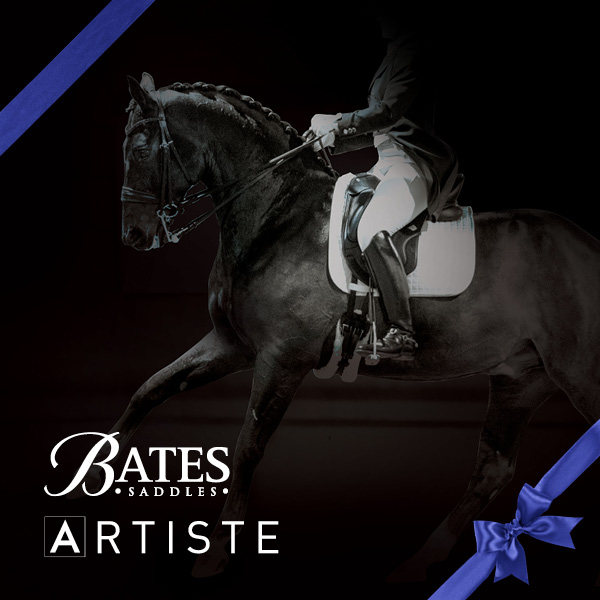Leg yielding is the most controversial movement in the gymnastic development of dressage horses. In part one of this two part article we look at some of the historical controversies that have surrounded the movement…
I must admit, that as a trainer with experience behind me, I value leg yielding as a helpful tool for the horse preparation. Yet, I know that raising this subject and expressing my opinions, pits me against very prestigious horsemen of the past, such as the former Director of the Spanish Riding School in Vienna, and bronze medal winner at the Olympics in Berlin(1936), Colonel Alois Podhajsky.
In fact the controversy of whether the leg yield is a beneficial, or not such a good exercise in horse preparation, has a long history. The leg yield doesn’t belong to the school movements originating in the ‘de la Guérinière ‘ era (nearly 300 years ago).
Actually it was ‘invented’ in newer times and was much appreciated by the Germans. They adopted it right from the beginning, considering it to be an important enough aid that they added it to their cavalry instruction book in the past, and since then in all the official instruction books of the German National Equestrian Federation. This, surely, speaks for itself.
At the Spanish Riding School, on the other hand, their traditions remain unaltered since de la Guérinière: leg yield is hardly used, and then only to teach the young stallion to respond to the sideways aids. It is not used as a preparation exercise and here is where the conflict begins.
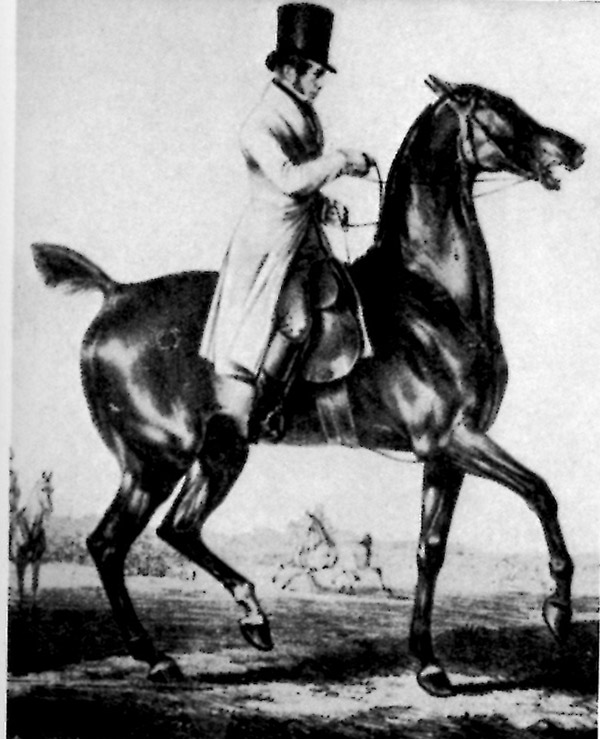
Louis Seeger (1798 – 1865) ‘inventor’ of the leg yield…
Louis Seeger, (Gustav Steinbrecht’s teacher), described leg yielding in detail in his Guide for Systematic Preparation of the Campagne Horse written in 1837, considering it an important tool. Since then leg yielding has been mentioned and described, with very few exceptions, in the most important equestrian books.
Leg yielding was treated separately as a warming up (loosening) and relaxing exercise executed on two tracks, but it was not considered as a lateral pace from the classical riding art point of view; for the classicist, collection is the main issue. And this is the point we have to keep in mind; leg yielding is not a collected exercise, and therefore its utility and purpose is different to the lateral movements, which of course means that our expectations for exactly what this exercise accomplishes must be different, too.
As I mentioned before, leg yielding’s main characteristic is, that it is a relaxing, loosening exercise for the horse and if correctly executed has a great influence on the horse: firstly in teaching obedience to the rider’s leg, and secondly as a gymnastic exercise, it will improve suppleness and strength and the horse’s ability to take more weight in the hindquarters.
Let me share with you my experiences with using the leg yield in training of both rider and horse and the reason of my personal belief in the value of this movement as an equestrian tool.
But first we should analyse some of the objections raised against leg yielding:
- Some trainers believe leg yielding causes the horse to stiffen.
- Others consider leg yielding of no gymnastic value, because the hind legs are stepping laterally, and not enough forward, and therefore, not stepping in the direction of the horse’s and the rider’s centre of the gravity thus allowing the horse not to carry the full weight with the hindquarters.
- Another major objection is that it favours the horse falling over the outside shoulder.
- During the execution of the leg yielding, the horse may knock his forelegs against each other and hurt himself.
As you might have guessed, I disagree completely with these opinions, because the leg yield performed correctly – I underline performed correctly- relaxes the horse, teaches it not only to step sideways, but also to bend and engage the hind legs (especially the inside hind) in a soft, but efficient manner, while the firmer outside rein controls the outside shoulder, preventing an exaggerated bend at the neck. In this case the horse cannot fall over the outside shoulder nor knock its forelegs. And I repeat, this presupposes that, the correct angle is maintained, i.e.: the leg yield is asked for, and is performed correctly.
There are some more advanced riders who consider leg yield to be an exercise only for beginners and of no use for their level.
At clinics I often meet riders with horses ridden at medium or advanced level, but without the necessary relaxation, who show utter amazement when I ask them to ride leg yield. Surprisingly despite the level they have reached, most of them were unable to ride it correctly.
I also would like to mention the hesitation of some riders about leg yielding based on the theory originating in one of Colonel Podhajsky’s statements, that it is not necessary to teach the horse this movement (to flex opposite to the direction it is moving) because it will cause difficulties in teaching it the half pass later in its training.
What I would say to this is, would you believe that you should not teach your horse shoulder-in, because by doing so, it will not be able to learn travers or half pass; because in shoulder-in the bend is in the opposite direction the horse is moving?
In fact, leg yielding is the first step in teaching the horse shoulder-in; and shoulder-in is the foundation, the mother of all lateral movements. In my opinion, and by all means I am not the only one, leg yield is an invaluable exercise, with great benefits, for both horse and rider.
benefits for the horse follow
- BENEFITS FOR THE HORSE
For the horse, leg yielding is one of the most important loosening and relaxing exercises and at the same time a movement which supples and gymnasticises its whole body.
The pushing sideways of the horse’s inside hind leg by the inside leg of the rider will teach the horse to respond to the sideways influence and the crossing over will prevent any tendency of the horse to stiffen the leg, will gymnasticise it, and will contribute to the loosening up of the muscles of the rib region on this side.
The position of the head, loosens up the poll and in taking the outside rein, the horse accepts the bit evenly, chewing on it actively and relaxed. (It relaxes the mandibular muscles and tongue muscles, which both have connections to the neck muscles and muscles of the poll area where the head joins the neck, from where the relaxation is spread out chain-wise to the neck, chest, shoulders, back and hindquarter muscles. In fact to the whole body.
A horse which doesn’t relax the mandibular and the tongue muscles cannot be entirely relaxed. That is why it is so important that the horse accepts the bit, and the sign of that is the actively and relaxed chewing.
As for the rider it helps them to round the horse and push it from behind into the bit in an efficient, encouraging manner thus increasing obedience to the rider’s aids.
So, to sum- up, leg yielding teaches the horse:
a.- to respond to the forward sideways driving aids of the rider.
b.- to step more under its body and to bend and engage the inside hind leg, a consequence to be followed by the outside one.
c.- to take and accept the outside rein and therefore the bit evenly and as a result of that, to loosen up, to relax.
d.- to get accustomed to the various leg aids, i.e. to engage the inside hind leg, through the inside leg aid of the rider, encouraging it to cross over and sideways of the outside one, and in the next moment through the guarding influence of the outside leg aids, rather to step forward and sideways than to fall out with the outside hind leg.
Thus the leg yield teaches the horse to move laterally, which actually makes it easier for the introduction of shoulder-in, the foundation of all the lateral movements.
It is vitally important that leg yield is only performed at medium walk!
It can also be used at working trot, but I don’t advocate this for the following reason, if it is done at the trot you will be confronted with a loss of impulsion. This is because of the increased angle leg yielding is normally executed – 45 degrees. Think about it with me, the impulsion is the power, the energy, the swing created by, and originated, in the horse’s hindquarters at trot and canter. This produces the moment of suspension.
more follows
Breeding a star foal this season in Australia?
Whatever your discipline, IHB has the stallion for your mare: www.ihb.com.au
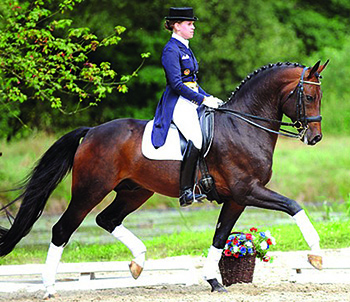
Fidertanz, 2021 Hanoverian Stallion of the Year
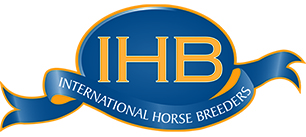
If the horse is working straight, or performing any of the classical lateral movements, such as shoulder-in, travers, renvers or half pass, where the bending through its body will not, or at least should not, exceed an angle of 30 degrees, this impulsion will flow from the hind legs through its swinging back, then through the relaxed neck to the mouth and via bit and rein will be transmitted to the rider’s hands.
This impulsion is literally ‘captured’ by the rider’s hands and transformed into contained power.
This contained power is then redirected back in the same way (via rein, bit to the horse’s mouth, then through the neck, back) into the hindquarters, thereby increasing the power of the impulsion. In this case the rider will experience in their hands the feeling as if they are holding a taut bow.
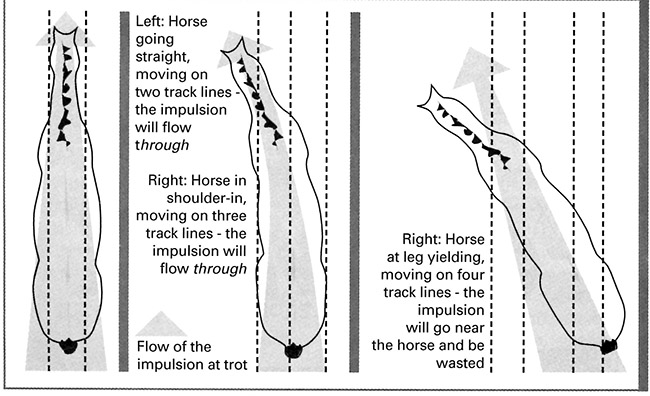
At leg yielding, as I mentioned before, due to the increased angle (45 degrees) the impulsion will not be transmitted through the horse’s body, but will be directed on a path near it and be wasted. The horse will ‘fall out’ through the outside shoulder and without impulsion flowing ‘through’ the danger of losing the forwardness of the movement is increased (loss of carriage_and cadence).
In addition to that, executed at trot, the leg yielding, because of the increased lateral drifting action of the hindlegs, may put unnecessary pressure on them, especially on their joints. There is also the possibility of the forelegs crossing over and knocking into each other, causing injuries.
Performed at walk, the walk being a pace without impulsion, you have nothing to lose or waste: you cannot lose something you never had!
For a better understanding I would like to clarify this point. Perhaps you have read some articles about impulsion at the walk. Unfortunately, the author has confused impulsion, which is the power or energy produced by the horse’s hind legs pushing strongly into the ground (at trot and canter creating moments of suspension in these paces), with the forward urge and industriousness which has to be present in a forward-ridden walk.
I would also advise to use leg yield as the best correction for horses that have lost the quality of the walk through lack of correct riding (horses that were ‘pulled together’, i.e. the rider has used proportionally more hand than leg supported by the seat).
A horse performing a correct leg yield (ridden from behind into the outside rein and accepting the bit evenly) can’t amble or jog, it can only step clearly in a four beat walk.
more follows
2. BENEFITS FOR THE RIDER.
And now, let’s look at benefits of leg yield for the rider.
a.- Firstly it helps the rider to improve their fine riding feeling by learning the application of how much leg to how much seat and how much hand. In other words, as a rider, it helps to develop the proper proportion in the co-ordination of leg, seat and rein aids: it helps you to fine tune your aids to any particular horse.
If you use too much leg, the horse will overreact and increase its angle until it turns around or stops. If you don’t use enough leg the horse will not perform any lateral movement.
If you use too much hand the horse will shorten the neck, will come behind the bit, cease to move forward, get tense and some will even step backwards or fight against such a mistreatment. If you don’t use the right proportion of rein aids the horse will come above the bit, hollow the back and drag the hind legs.
If you don’t sit on both seat bones putting just a little more weight on the inside one, you are not supporting your leg aids properly and the horse may not step under or laterally well enough.
b.-Leg yielding also teaches and trains the rider to apply the alternate leg aids, at the correct moment and in connection with, and as a part of corresponding half parades.
c.- Leg yielding teaches the rider to apply lateral aids, improving their ability to push the horse with the inside leg into the outside rein and therefore to ride it evenly into the bit. It also teaches them to use the outside leg in a forward driving, or depending on the horse’s reaction, in a guarding manner.
d.- Leg yield helps you as a rider to get tuned-in to any horse you ride for the first time, in the most efficient way.
Now that I have without doubt convinced you of the enormous value of this movement, let’s move on and be clear about its finer points.

Leg yielding together with the turn on the forehand is one of the first and easiest to execute gymnastic exercises for the horse on the scale of movements that are arranged in a successive order from their degrees of difficulty in the dressage preparation, culminating in this progression with the most demanding, as Piaffe and Passage, followed by the airs above the ground (Pessade, Levade, Ballotade, Capriole, Croupade, Courbette).
The moment to begin to use leg yielding in your everyday preparation is when the inside leg of the horse is ready to carry more weight through the previous preparation performed on one track i.e. through properly executed turns (riding correctly and deep enough through corners) or circles of different sizes. The turn on the forehand is a good introduction for leg yielding.
The leg yield is a movement performed on two tracks and four lines, i.e. each leg is moving on its own track line. The horse has to be straight in itself, being slightly flexed (positioned) at the poll against the direction it is moving. Leg yielding belongs to the lateral movements despite the fact it isn’t a collected exercise and has to be done at medium walk. At the beginning it can be ridden at a shortened walk, aiming to help the horse to understand what is required.
It has to be done on long, diagonal and circle lines and never on the short sides of the arena. These short sides should be used to refresh the medium walk, driving the horse more forward, using the forward urge created in this way to maintain the energy and activity necessary for performing the next leg yield down the next long side.
The angle of the horse to the track line it is moving along, has to be between 30 to at most 45 degrees, because it has to move more forwards then sideways, while its inside legs have to step over and in front of the outside ones. If the angle becomes more than 45 degrees, the horse will step more sideways than forwards, and as a result will not be able to engage its hind legs under the body to carry weight and it will cease to take the outside rein (and therefore the bit properly), and as I mentioned before, the gymnastic influence of the leg yield exercise will be lost. If this happens you have to interrupt the exercise, straighten the horse on the track line, ride forward at medium walk and try leg yield again focusing more on the restraining, guarding influence of your outside leg and rein aids.


